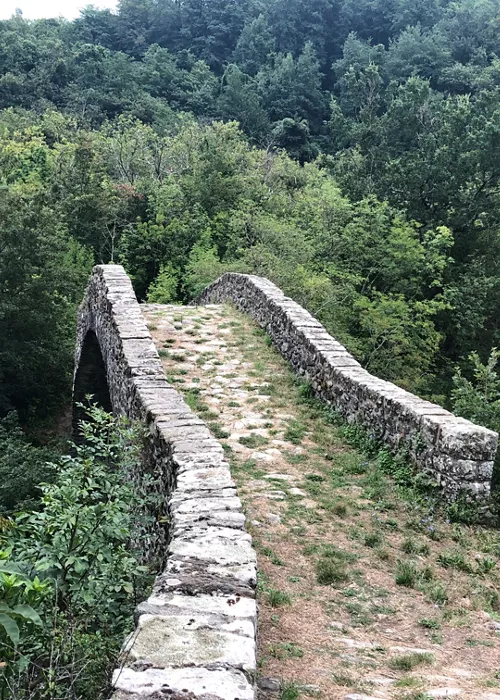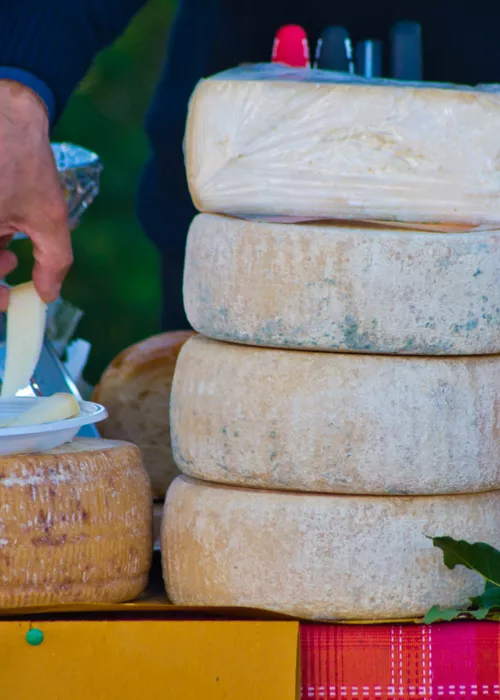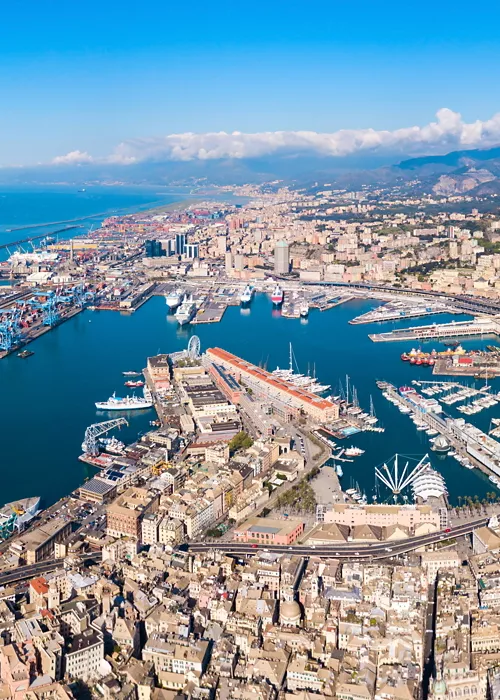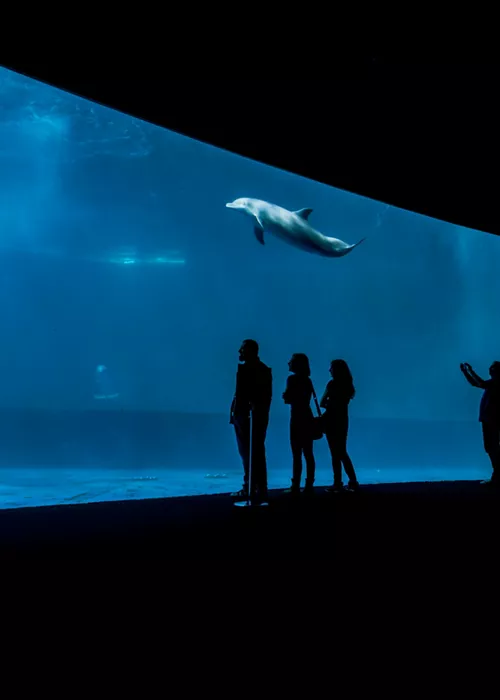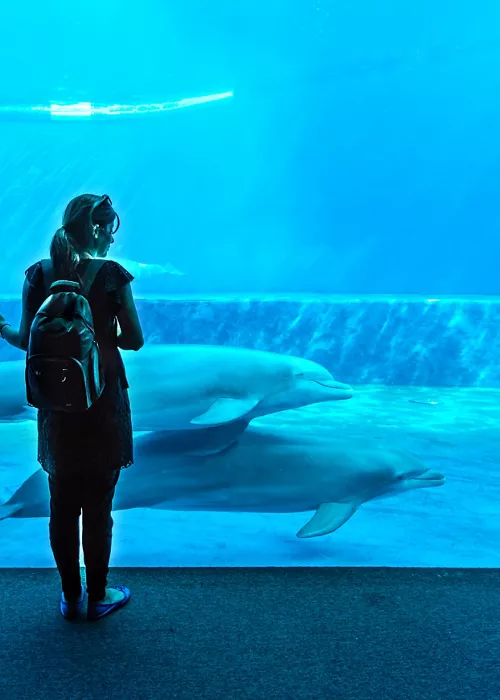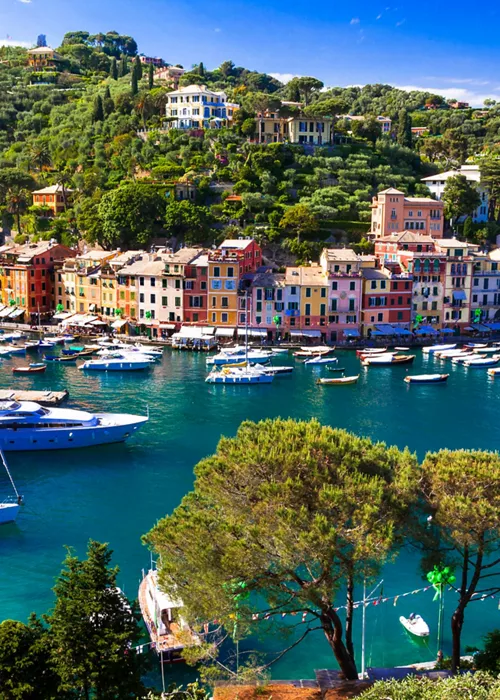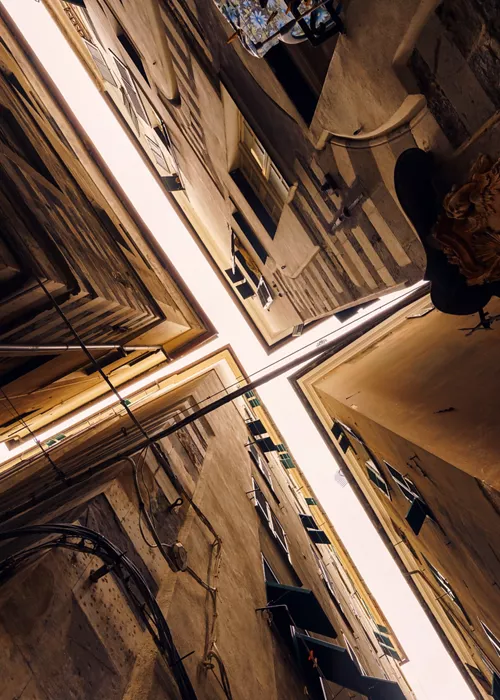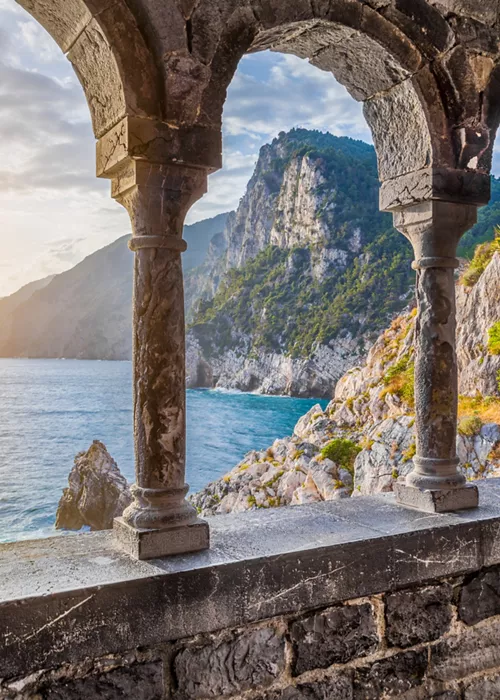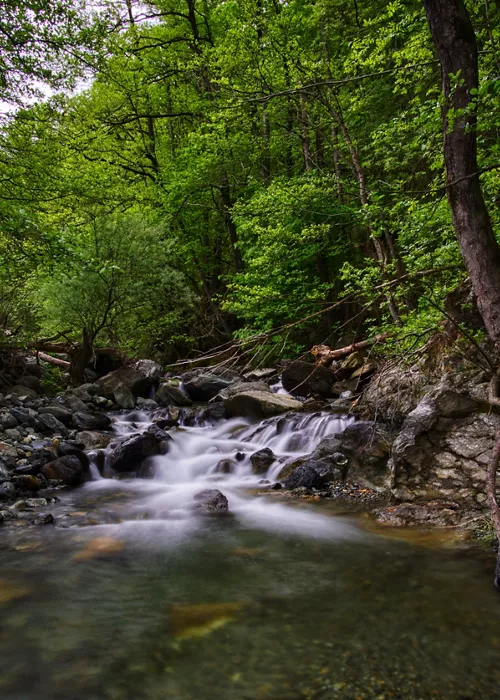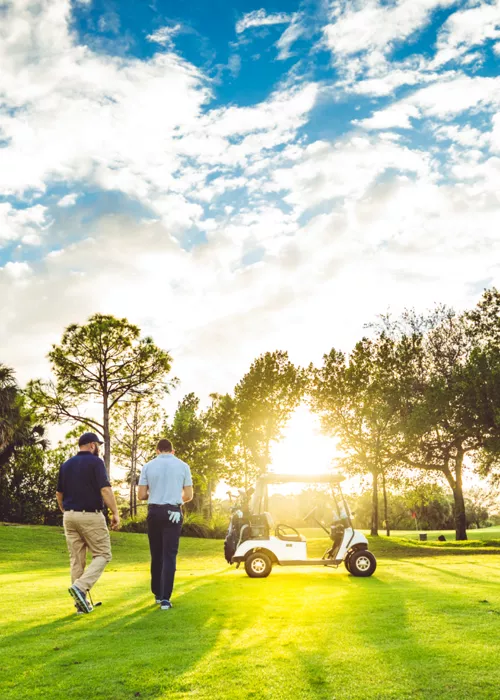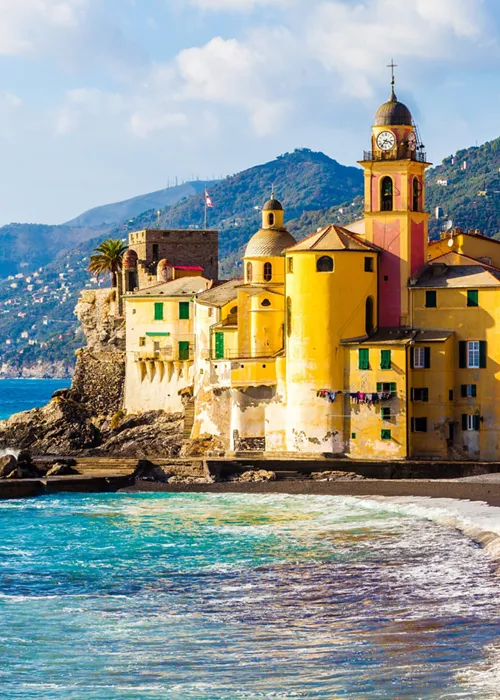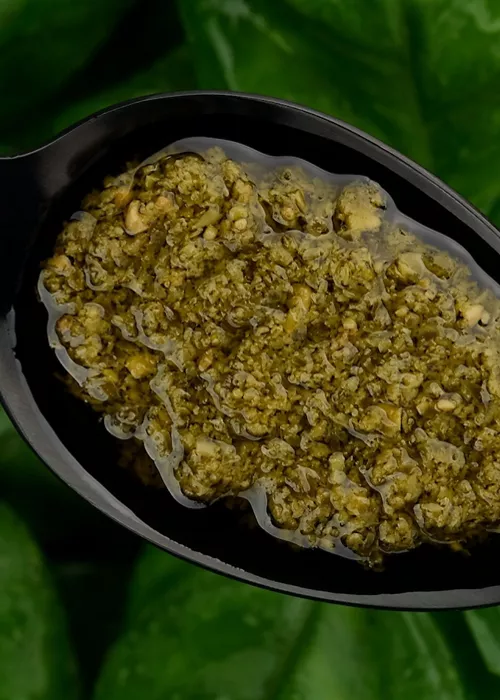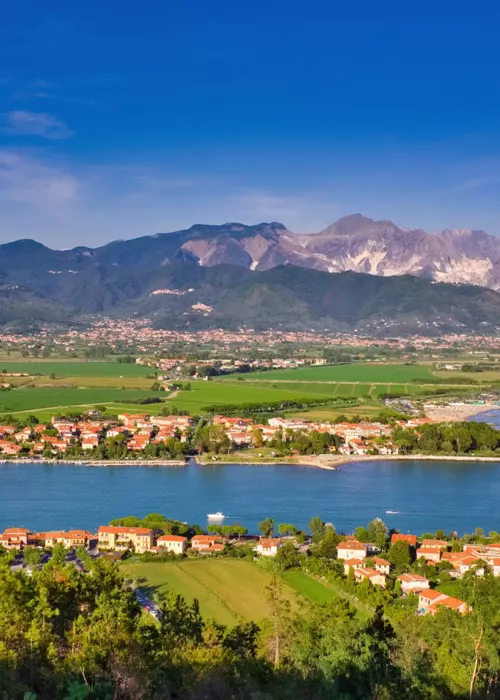The hidden villages of Dolceacqua, Apricale and Perinaldo in Western Liguria
8 minutes

Index
Between the Italian Riviera and the Ligurian Alps, near the French border, lies a land of medieval hilltop villages surrounded by picturesque vineyards and olive groves. Those hidden villages are so close to the buzzing coastal area and yet feel so far away. I fell in love, just like the painter Monet did before, with the atmospheric village of Dolceacqua, a wonderful base for visiting the Western Liguria backcountry. From there, it's only a few adventurous kilometres on small winding roads to the even lesser-known villages of Apricale and Perinaldo.
Dolceacqua

Located only a few kilometres away from the French border, Dolceacqua is known for its unique historical centre, where light is almost absent. Covered and even underground "caruggi" (small medieval streets), which need to be lit even during the day, give a very unique atmosphere to this truly well-preserved medieval village. It is not a surprise that the Dolceacqua village is certified with the Bandiera Arancione (the Orange Flag of the Italian Touring Club, a tourist-environmental quality mark for small towns) and a member of the Borghi più Belli d'Italia (the most beautiful villages in Italy). The village is also known for its wine, the Rossese Dolceacqua DOC, which became the first Controlled Designation of Origin in Liguria in 1972.
Top 5 things not to miss
- A visit to the Doria castle perched atop the village
- The view of the Old Bridge as painted by French painter Claude Monet in 1884 (a canvas marks the spot)
- A hike to the Chiesa di San Bernardo for the best panoramic view of the village
- A tasting of Rossese wine (in high season you can book tastings in the surrounding vineyards, but you will also be able to try it all year round in the village's bars and restaurants)
- The typical sweet of Dolceacqua, the "michetta", a small brioche bun topped with sugar (celebrated every year on August 16 during the "Festa della Michetta")
The village of Dolceacqua is actually divided in two by the Nervia river, with on one side the Terra quarter, the medieval part of the village, and on the other side the Borgo quarter dating mostly from the 19th century, where you will find most restaurants and cafes. The famous Ponte Vecchio (Old Bridge), which was painted by Monet during his stay in Dolceacqua, links the two quarters. What is incredible is that the view is still identical today to what Money painted about a century and a half ago! I spent three days in Dolceacqua and never got tired of wandering the streets of both parts of the village, especially at night when they become even more mysterious.
Going up the Via Castello in the Terra neighbourhood, you will quickly reach the ruins of the Doria Castle. A visit to the castle is the best way to learn about the history of the village: I was quite impressed by the renovations and the interactive exhibits. During the visit, you will learn that the history of Dolceacqua is linked to the Doria family from Genoa, who bought the city in the 13th century before extending their dominion along the Nervia Valley and developing a complicated love-and-hate relationship with their neighbours, the Grimaldi of Monaco in the following centuries.
I was also surprised to discover so many good restaurants in such a small village! If you like to discover local specialities, Dolceacqua is definitely a place where you want to spend more than a day. For a truly Ligurian experience, I recommend the agriturismo U fundu de Cascin with its romantic patio in the old town, serving seasonal menus showcasing the best of the local ingredients and traditional recipes. For a bit more modern take on the local cuisine, you should also check out the Casa e Bottega Restaurant across the river. They serve a very good brandacujun (codfish brandade), another local speciality, but also an impressive spaghetti with clams (no parmesan allowed!).
Dolceacqua: Useful Information
Best time to visit: even if some restaurants and activities will be closed, spring and autumn are for me the best moment to visit Dolceacqua as you will be able to enjoy beautiful landscapes without being too hot. However, try to avoid harvest season if you are interested in visiting the Rossese wineries, as they are closed to tourists during that time.
How to get there: The closest city with a train station is Vintimille. There are direct connections with Genoa in Italy and Nice in France. From Ventimiglia, the bus (Line 7) will bring you to Dolceacqua in less than 20 minutes. If you come by car, note that the parking spots marked in yellow are reserved for locals. The village has several free car parks, including the big one near the Old Bridge.
Article written about the experience of Emmanuelle Hubert - Au goût d'Emma.
Apricale

Certified as well with the Bandiera Arancione and one of the Most Beautiful Villages in Italy, Apricale is another beautiful medieval hilltop village, surrounded by lush mountains and only 5 kilometres away from Dolceacqua. Dating from the 10th century, the "village of the sun" (the etymology of its name) is known today for its street art. What also struck me is that cats are literally everywhere in this village! The inhabitants of Apricale seem to really love them, as you can find them painted on mailboxes, doors... and even on the walls of the castle!
The caruggi of Apricale, often covered as in Dolceacqua, are quite atmospheric and it is easy to get lost in them. I actually encourage you to do it on purpose as it is the best way to discover this small village.
At the top of the village centre, you will find the Castello della Lucertola, the old castle around which the village developed, which now houses a small eclectic museum, with often changing opening times as it is managed by volunteers. If you happen to find it open, you'll discover some of the village history, including a room dedicated to the very romanesque story of the most famous inhabitant of Apricale, Cristina Anna Bellomo, a fake countess turned Russian spy called by some the "Mata Hari of Apricale". From the small hanging gardens of the castle, you will get a nice view of the village centre.
Just below the castle, you can also visit the beautiful Chiesa della Purificazione di Maria Vergine. The church and the castle both dominate the main village square, Piazza Vittorio Emanuele II. Around the square, you will find some nice restaurants, all of them very popular so try to book well in advance! As I did not know that, I had some difficulties finding a spot to eat in Apricale. Fortunately, the Trattoria Bar a Ciassa was nice enough to accommodate me in the bar area while waiting for a table. My unpreparedness paid off as I sat in the best spot of the piazza for some people-watching before eating one of the best meals of my Ligurian trip. Their homemade raviolis with a sage and butter sauce were heavenly!
Top 5 things not to miss
● The numerous murals and street art
● The Castello della Lucertola and its hanging gardens
● Hiking around the village for the most picturesque views - you can even walk to Perinaldo and Dolceacqua if you are up for a longer adventure.
● Discover the Apricale gastronomy, famous in the region, at one of the village restaurants
● Try the food speciality of Apricale : pansarola, fritters served with sabayon
Apricale: Useful Information
Best time to visit: Apricale can be visited all year round, but if you visit in the Summer, try to be there during one of the main village events: the Theater Festival (10-12 evenings in August), the Elastic Ball Tournament happening every June-Juny and never interrupted since 1600, or the Pansarola Festival (Sagra della Pansarola) in September, dedicated to the village food speciality.
How to get there: Bus line 7 from Dolceacqua or Ventimiglia will bring you quickly to Apricale. I recommend using public transportation as the parking in Apricale is quite limited and roads are quite narrow.
Perinaldo

From Apricale, the narrow winding road to Perinaldo will leave you clinging to your steering wheel for 20 very long minutes, but I promise: it is worth it! Village of Excellence certified both Bandiera Arancione (Orange Flag) and Borghi più Belli d'Italia (most beautiful villages of Italy), Perinaldo is however less touristy than Dolceacqua and Apricale. On the sunny October weekend I visited Perinaldo, I felt like I was almost alone in the village! If you like authentic villages, this place is definitely for you.
The centre and most beautiful part of Perinaldo is the upper part of the village. This long borgo spread out at the top of a hill was bought by the Doria family in the 13th century and has been a source of conflict with the Grimaldi of Monaco for centuries.
Perinaldo is forever linked to the field of astronomy thanks to its most famous inhabitant: Gian Domenico Cassini, a famous scientist who became amongst other things the astronomer of King Louis XIV and the first Director of the Paris Observatory. The city does have its own astronomical observatory (Osservatorio Astronomico G.D.Cassini - of course), which is sometimes open to the public. The streets of the village are also a kind of open-air museum dedicated to astronomy with their numerous thematic murals and even a street with a scaled solar system model.
The village of Perinaldo is also known for its artichoke (Slow Food product), brought from Provence at the time of Napoleon, and for its extra virgin olive oil. A small festival dedicated to both products is organized every year on the second Sunday of May.
Top 5 things not to miss
● Discover the murals and scaled solar system in via Cassini, the most beautiful street of the medieval village
● Try local wines at the very atmospheric wine bar DiVino E... located in the same street (I also had a very good pinsa made with local products)
● Visit the Chiesa di San Nicolo da Bari on the beautiful Piazza Emilio Croesi
● Enjoy panoramic views up to the sea from the Piazza Maurizio Passerone and to Apricale from the small square near Piazza Castello on the other side of the village
● Spend an evening looking at the stars at the village astronomical observatory
Perinaldo: Useful Information
Best time to visit: you can visit Perinaldo all year round. Just know that there are only a few places where you will be able to eat or drink so if you are planning to spend the day, it is better to check if they are open before you go.
How to get there: unfortunately, at the moment, Perinaldo can't be reached by public transportation. You can only get there by car or by hiking from Apricale or Dolceacqua. If you come by car, please be careful on the road leading to Perinaldo as it is very narrow and crossing another car might be very difficult. Parking in Perinaldo is also quite limited (at least at the top of the village).




